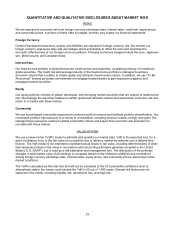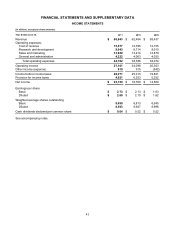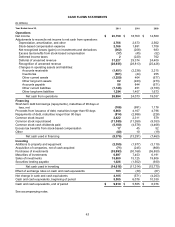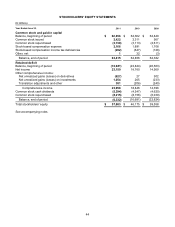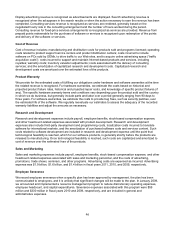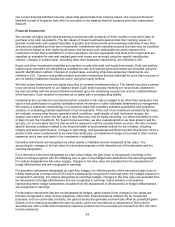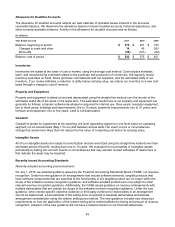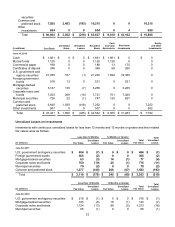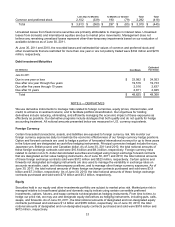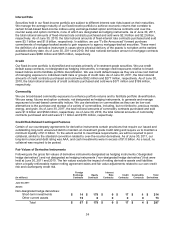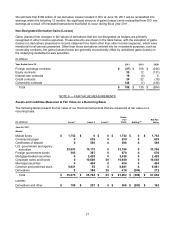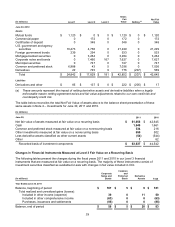Microsoft 2011 Annual Report Download - page 49
Download and view the complete annual report
Please find page 49 of the 2011 Microsoft annual report below. You can navigate through the pages in the report by either clicking on the pages listed below, or by using the keyword search tool below to find specific information within the annual report.
49
Allowance for Doubtful Accounts
The allowance for doubtful accounts reflects our best estimate of probable losses inherent in the accounts
receivable balance. We determine the allowance based on known troubled accounts, historical experience, and
other currently available evidence. Activity in the allowance for doubtful accounts was as follows:
(In millions)
Y
ear Ended June 30, 2011 2010 2009
Balance, beginning of period $ 375 $ 451 $ 153
Charged to costs and other 14 45 360
Write-offs (56) (121) (62)
Balance, end of period $ 333 $ 375 $ 451
Inventories
Inventories are stated at the lower of cost or market, using the average cost method. Cost includes materials,
labor, and manufacturing overhead related to the purchase and production of inventories. We regularly review
inventory quantities on hand, future purchase commitments with our suppliers, and the estimated utility of our
inventory. If our review indicates a reduction in utility below carrying value, we reduce our inventory to a new cost
basis through a charge to cost of revenue.
Property and Equipment
Property and equipment is stated at cost and depreciated using the straight-line method over the shorter of the
estimated useful life of the asset or the lease term. The estimated useful lives of our property and equipment are
generally as follows: computer software developed or acquired for internal use, three years; computer equipment,
two to three years; buildings and improvements, five to 15 years; leasehold improvements, two to 10 years; and
furniture and equipment, one to five years. Land is not depreciated.
Goodwill
Goodwill is tested for impairment at the reporting unit level (operating segment or one level below an operating
segment) on an annual basis (May 1 for us) and between annual tests if an event occurs or circumstances
change that would more likely than not reduce the fair value of a reporting unit below its carrying value.
Intangible Assets
All of our intangible assets are subject to amortization and are amortized using the straight-line method over their
estimated period of benefit, ranging from one to 10 years. We evaluate the recoverability of intangible assets
periodically by taking into account events or circumstances that may warrant revised estimates of useful lives or
that indicate the asset may be impaired.
Recently Issued Accounting Standards
Recently adopted accounting pronouncements
On July 1, 2010, we adopted guidance issued by the Financial Accounting Standards Board (“FASB”) on revenue
recognition. Under the new guidance on arrangements that include software elements, tangible products that
have software components that are essential to the functionality of the tangible product are no longer within the
scope of the software revenue recognition guidance, and software-enabled products are now subject to other
relevant revenue recognition guidance. Additionally, the FASB issued guidance on revenue arrangements with
multiple deliverables that are outside the scope of the software revenue recognition guidance. Under the new
guidance, when vendor specific objective evidence or third party evidence for deliverables in an arrangement
cannot be determined, a best estimate of the selling price is required to separate deliverables and allocate
arrangement consideration using the relative selling price method. The new guidance includes new disclosure
requirements on how the application of the relative selling price method affects the timing and amount of revenue
recognition. Adoption of the new guidance did not have a material impact on our financial statements.


